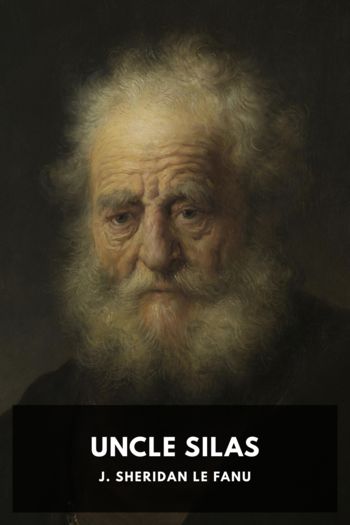Uncle Silas J. Sheridan Le Fanu (good books to read for beginners .TXT) 📖

- Author: J. Sheridan Le Fanu
Book online «Uncle Silas J. Sheridan Le Fanu (good books to read for beginners .TXT) 📖». Author J. Sheridan Le Fanu
By J. Sheridan Le Fanu.
This ebook is the product of many hours of hard work by volunteers for Standard Ebooks, and builds on the hard work of other literature lovers made possible by the public domain.
This particular ebook is based on a transcription produced for Project Gutenberg and on digital scans available at Google Books.
The writing and artwork within are believed to be in the U.S. public domain, and Standard Ebooks releases this ebook edition under the terms in the CC0 1.0 Universal Public Domain Dedication. For full license information, see the Uncopyright at the end of this ebook.
Standard Ebooks is a volunteer-driven project that produces ebook editions of public domain literature using modern typography, technology, and editorial standards, and distributes them free of cost. You can download this and other ebooks carefully produced for true book lovers at standardebooks.org.
To the right Hon.
the Countess of Gifford,
as
a token
of
respect, sympathy, and admiration,
this tale
is
inscribed
by
the Author.
A Preliminary WordThe writer of this Tale ventures, in his own person, to address a very few words, chiefly of explanation, to his readers. A leading situation in this “Story of Bartram-Haugh” is repeated, with a slight variation, from a short magazine tale of some fifteen pages written by him, and published long ago in a periodical under the title of “A Passage in the Secret History of an Irish Countess,” and afterwards, still anonymously, in a small volume under an altered title. It is very unlikely that any of his readers should have encountered, and still more so that they should remember, this trifle. The bare possibility, however, he has ventured to anticipate by this brief explanation, lest he should be charged with plagiarism—always a disrespect to a reader.
May he be permitted a few words also of remonstrance against the promiscuous application of the term “sensation” to that large school of fiction which transgresses no one of those canons of construction and morality which, in producing the unapproachable “Waverley Novels,” their great author imposed upon himself? No one, it is assumed, would describe Sir Walter Scott’s romances as “sensation novels;” yet in that marvellous series there is not a single tale in which death, crime, and, in some form, mystery, have not a place.
Passing by those grand romances of Ivanhoe, Old Mortality, and Kenilworth, with their terrible intricacies of crime and bloodshed, constructed with so fine a mastery of the art of exciting suspense and horror, let the reader pick out those two exceptional novels in the series which profess to paint contemporary manners and the scenes of common life; and remembering in the “Antiquary” the vision in the tapestried chamber, the duel, the horrible secret, and the death of old Elspeth, the drowned fisherman, and above all the tremendous situation of the tide-bound party under the cliffs; and in St. Ronan’s Well, the long-drawn mystery, the suspicion of insanity, and the catastrophe of suicide;—determine whether an epithet which it would be a profanation to apply to the structure of any, even the most exciting of Sir Walter Scott’s stories, is fairly applicable to tales which, though illimitably inferior in execution, yet observe the same limitations of incident, and the same moral aims.
The author trusts that the Press, to whose masterly criticism and generous encouragement he and other humble labourers in the art owe so much, will insist upon the limitation of that degrading term to the peculiar type of fiction which it was originally intended to indicate, and prevent, as they





Comments (0)